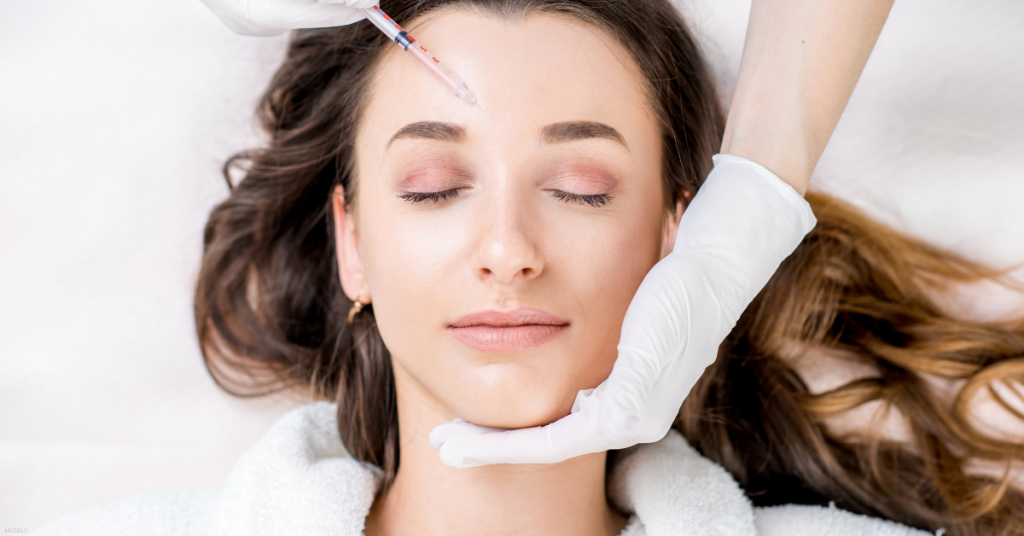There’s truth to the old saying that “an ounce of prevention is worth a pound of cure,” and “preventative” BOTOX injections are an example. An increasing number of people in their mid-to-late 20s are considering BOTOX and traveling to our Des Moines practice from throughout central Iowa for injections that can prevent wrinkles from developing.
Does Preventative BOTOX Work?
If getting BOTOX injections to prevent lines and wrinkles from developing sounds a bit too good to be true, it helps to understand how BOTOX works to minimize wrinkles after they’ve already shown up.
When you frown, squint, smile, or furrow your brow, your facial muscles contract, and the skin repeatedly creases. As you get older, less collagen is produced, and the skin loses its elasticity. Wrinkles and fine lines, such as crow’s feet and worry lines, begin to emerge.
Injecting small amounts of BOTOX (sometimes called “baby BOTOX”) into the tiny muscles that contract when you change expressions temporarily weakens and relaxes those muscles.
Preventative Botox typically requires less product and fewer treatments than if you were tackling existing wrinkles. BOTOX results usually last about 3 to 4 months. But for patients in their late 20s or early 30s, touch-up treatments scheduled once or twice a year may be enough to maintain the desired appearance.
We also offer Jeuveau®, which is a product like BOTOX and produces similar results.
Will BOTOX Lose Its Effectiveness if Used Too Early?
Some of the patients considering preventative BOTOX at our practice are concerned about becoming “immune” to the injections’ effects over time. BOTOX resistance involves patients who have either built up antibodies against the botulinum toxin or who happen to metabolize the BOTOX drug exceptionally quickly. For these patients, BOTOX injections provide underwhelming results, a very short-lived effect, or no effect at all.
BOTOX resistance is very rare—clinical trials conducted by the makers of BOTOX showed only 1.5% of patients developed antibodies to the drug. Additionally, this condition isn’t related to starting BOTOX earlier. It can occur for a patient whose first injection comes at age 40. And it’s important to keep in mind that building resistance to BOTOX is less likely for younger patients because they’re getting smaller doses.
Your Choice of Injector Is Crucial
Because BOTOX is minimally invasive and so common, patients may be less diligent about researching providers before choosing one. It’s just an injection, right? Wrong.
It’s always important to choose a qualified injector, but it’s especially essential for younger patients. The injector needs to identify the tiny muscles being targeted and inject in precise locations with the correct dose to avoid unwanted side effects.
Our team of highly trained injectors includes board-certified facial plastic surgeons, a certified physician assistant, and a nurse practitioner. Together, they have a combined experience of more than 45 years. You can see the results in our gallery of BOTOX before-and-after photos featuring some of our actual patients.
I suggest asking potential providers about their qualifications and how often they administer BOTOX injections. Ask them about their specific injection plans and the benefits they think you’ll see, along with what you should expect during and after the treatment.
Many of the patients getting preventative BOTOX injections combine the procedure with other med spa-type treatments, such as lip augmentation, and consider joining our VIP Skin Health Club.
If you’ve heard about preventative BOTOX and want to learn if it’s right for you, call us at (515) 277-5555 or use our online contact form to request a consultation.


Leave a Reply